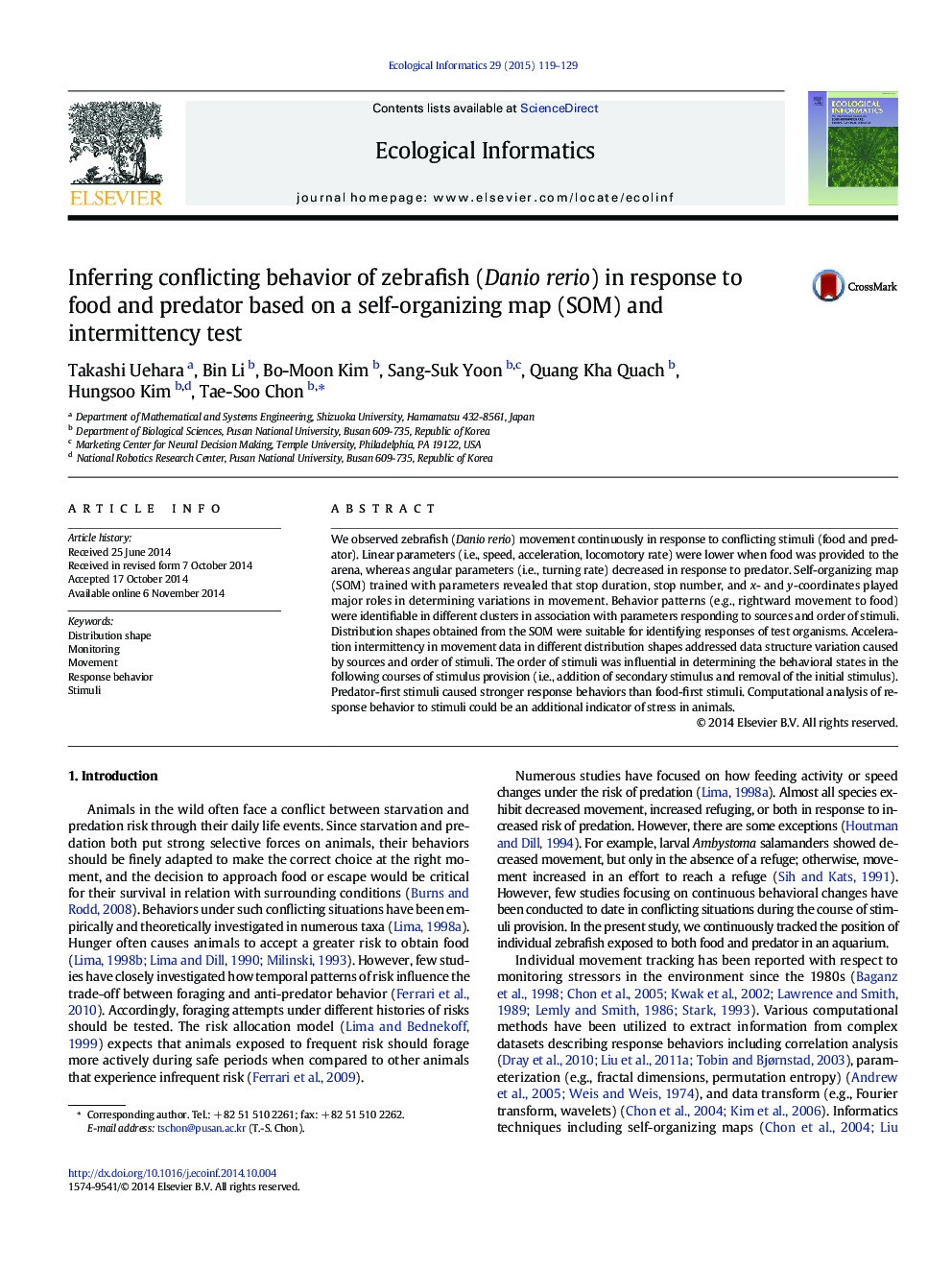| Article ID | Journal | Published Year | Pages | File Type |
|---|---|---|---|---|
| 4374798 | Ecological Informatics | 2015 | 11 Pages |
•Movement parameters were differentiated in response to sources of stimuli.•SOM was suitable for identification of conflict behavior patterns.•Acceleration intermittency explained variation in response behavior to conflict.•Predator-first stimuli caused stronger response behaviors than food-first stimuli.
We observed zebrafish (Danio rerio) movement continuously in response to conflicting stimuli (food and predator). Linear parameters (i.e., speed, acceleration, locomotory rate) were lower when food was provided to the arena, whereas angular parameters (i.e., turning rate) decreased in response to predator. Self-organizing map (SOM) trained with parameters revealed that stop duration, stop number, and x- and y-coordinates played major roles in determining variations in movement. Behavior patterns (e.g., rightward movement to food) were identifiable in different clusters in association with parameters responding to sources and order of stimuli. Distribution shapes obtained from the SOM were suitable for identifying responses of test organisms. Acceleration intermittency in movement data in different distribution shapes addressed data structure variation caused by sources and order of stimuli. The order of stimuli was influential in determining the behavioral states in the following courses of stimulus provision (i.e., addition of secondary stimulus and removal of the initial stimulus). Predator-first stimuli caused stronger response behaviors than food-first stimuli. Computational analysis of response behavior to stimuli could be an additional indicator of stress in animals.
